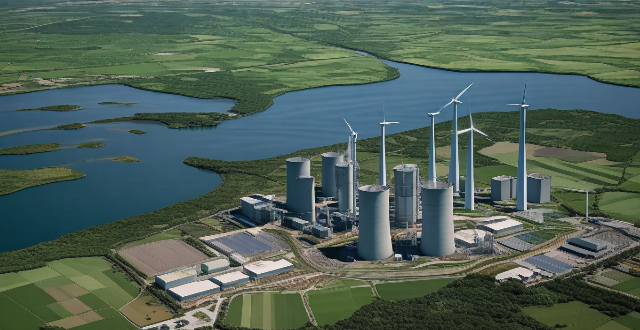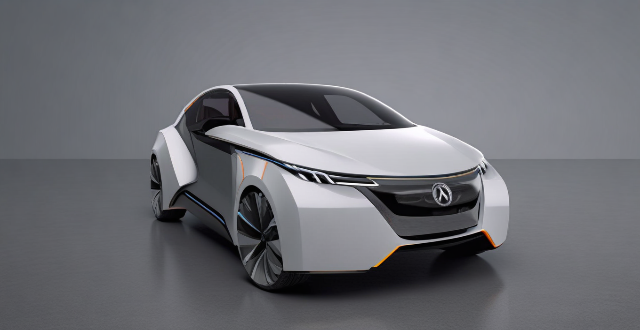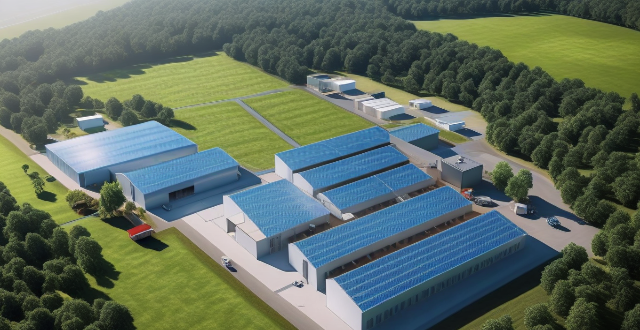Use Electricity

How does a home energy audit help in saving on electricity ?
A home energy audit helps identify inefficiencies and suggests upgrades, leading to electricity savings. It includes checks on insulation, air leakage, ductwork, appliance efficiency, and lighting systems. It also promotes behavioral changes and renewable energy options, providing a prioritized plan for improvements along with information on financial incentives.

How is the demand for electricity affecting the energy market ?
The demand for electricity is a crucial factor that affects the energy market. As the world becomes more reliant on electricity, the demand for it continues to grow. This increased demand has significant implications for the energy market, including the types of energy sources used, the cost of electricity, and the environmental impact of energy production. The key points include population growth, economic development, technological advancements, diversification of energy sources, investment in infrastructure, cost of electricity, environmental impact, renewable energy sources, energy efficiency, smart grid technology, and electric vehicles. By considering sustainable energy solutions, we can work towards a more sustainable and equitable energy future.

How does solar power generation work and is it a viable option for residential use ?
Solar power generation involves converting sunlight into electricity using solar panels, which are made up of photovoltaic cells. The process includes generating electricity, converting it from DC to AC, net metering, and battery storage. Solar power is a viable option for residential use due to its cost-effectiveness, energy independence, environmental benefits, increased property value, and technological advancements.

How do tidal and wave energy systems generate electricity ?
Tidal and wave energy systems are renewable sources of energy that harness the power of ocean movements to generate electricity. These systems work on the principle of converting the kinetic energy present in the tides and waves into electrical energy, which can then be used for various applications. Tidal barrages create a difference in water level between two sides of a barrage, built across an estuary or bay with significant tidal range. As the tide rises, water flows through turbines located within the barrage, generating electricity. When the tide goes out, the process is reversed, with water flowing back through the turbines in the opposite direction, generating additional electricity. Tidal stream systems use underwater turbines placed in areas where tidal currents are strong. Unlike tidal barrages, tidal stream systems do not require large infrastructure and can be deployed in various locations where strong tidal currents exist. Wave Energy Converters (WECs) are devices designed to capture the energy from ocean waves and convert it into electricity. There are several types of WECs, including point absorbers, attenuators, and terminators, each working slightly differently but sharing the same goal of harnessing wave energy.

What impact do energy-efficient appliances have on reducing electricity bills ?
Energy-efficient appliances can significantly reduce electricity bills by using less energy and incorporating smart features. These appliances may have higher upfront costs, but the long-term cost savings often outweigh the initial investment. Additionally, energy-efficient appliances contribute to a smaller carbon footprint and conserve energy resources, promoting sustainability. Overall, these appliances offer financial and environmental benefits for conscious consumers.

Is it possible to lower my monthly utility expenses without sacrificing comfort ?
Yes, it is definitely possible to reduce your monthly utility expenses without compromising your comfort. Here are some tips and strategies that you can implement: - **Energy-efficient appliances**: Replace old appliances with energy-efficient models to save on electricity bills. - **Thermostat settings**: Adjust your thermostat settings to save money on heating and cooling. - **Lighting**: Use LED bulbs to use less energy and last longer than traditional incandescent bulbs. - **Water usage**: Fix leaks to save on your water bill. - **Insulation**: Improve insulation to keep your home warm in winter and cool in summer, reducing the need for heating and cooling. - **Unplug electronics**: Unplug electronics when not in use to save on your electricity bill. - **Shop around**: Shop around for better deals on your utilities. - **Be mindful of usage**: Be aware of how much water, gas, and electricity you're using to identify areas where you can cut back.

How can I reduce my electricity and water bills ?
To reduce electricity and water bills, one should switchTo reduce electricity and water bills, one should switch, adjust habits like turning off install water-saving fixtures, change bathroom habits, optimize garden watering, and be efficient with laundry and dishes.

Can using energy-efficient appliances help cut down electricity consumption ?
Energy-efficient appliances can help cut down electricity consumption by using less power than traditional counterparts, leading to cost savings and environmental benefits. Examples include LED light bulbs, smart thermostats, and energy star certified refrigerators.

What are the basic principles of electrical safety ?
Electrical safety is crucial in daily life, especially with modern technology. Basic principles include understanding electricity, maintaining equipment, using appropriate tools, avoiding direct contact with electricity, keeping away from water, following proper wiring practices, being cautious with extension cords, checking for overheating, and knowing your limitations. Following these principles can prevent accidents and ensure safe use of electrical devices.

How do solar panels impact electricity bills in the long run ?
Solar panels can significantly reduce electricity bills over the long term by reducing energy consumption, increasing self-sufficiency, and taking advantage of net metering programs. While the initial cost of installation can be high, lower operating costs, federal tax credits, and increased home value can help offset these expenses. Additionally, solar panels offer environmental benefits such as reduced carbon emissions and support for renewable energy infrastructure.

How does solar energy work ?
Solar energy is generated through the use of solar panels containing photovoltaic cells, which convert sunlight into electricity via the photovoltaic effect. This process involves absorbing sunlight, exciting electrons to a higher energy level, generating an electrical current, collecting it, and converting it into usable AC electricity. Solar energy is renewable, sustainable, cost-effective, and environmentally friendly, but its effectiveness can be reduced by weather conditions, and it requires additional equipment for energy storage. Despite high upfront costs, solar energy systems can lead to long-term savings on utility bills.

Can you explain the difference between photovoltaic and solar thermal energy ?
Solar energy harnesses the power of the sun to generate electricity or heat. Two major categories are photovoltaic (PV) and solar thermal systems, which differ in their conversion processes, applications, storage capabilities, efficiencies, and costs. PV systems convert sunlight directly into electricity using semiconductor materials like silicon, while solar thermal systems capture the sun's heat to warm a fluid, usually water or air, which then provides heat or generates electricity. PV is mainly used for generating electricity, and solar thermal is used for both heating and electricity generation. Solar thermal systems can more readily incorporate thermal storage solutions, while PV systems typically require battery storage for off-grid applications. The cost and affordability depend on the specific application and location, with PV becoming increasingly competitive in recent years.

How does solar power work and is it a viable option for homes ?
Solar power is generated through solar panels made of silicon cells that convert sunlight into direct current (DC) electricity. This process involves absorption of light, conversion to DC, conversion to alternating current (AC), and distribution throughout a home or business. Solar power is a viable option for homes due to its renewable nature, cost savings, environmental benefits, and government incentives. However, weather conditions, storage options, and upfront costs should also be considered before deciding if solar power is the right choice for your home.

How do I properly use and maintain electrical equipment ?
Electrical equipment requires proper use and maintenance to ensure safety, efficiency, and longevity. Key tips include reading the manual, inspecting before use, avoiding overloading, keeping away from water, cleaning regularly, checking wiring, replacing parts as needed, storing properly, unplugging when not in use, using surge protectors, and avoiding DIY repairs for significant issues. Following these guidelines helps extend the lifespan of electrical equipment and minimizes risks associated with their use.

How do CHEVs compare in performance to fully electric vehicles ?
Chevrolet's hybrid electric vehicles (CHEVs) and fully electric vehicles (EVs) offer unique benefits and drawbacks. CHEVs have a longer range than EVs because they use both gasoline and electricity to power the vehicle, while EVs rely solely on electricity to power the vehicle. CHEVs are more efficient than traditional gasoline-powered vehicles, but less efficient than EVs. EVs are the most efficient type of vehicle because they produce zero emissions and use less energy than CHEVs. CHEVs typically have slower acceleration times than EVs due to their reliance on both gasoline and electricity, while EVs have faster acceleration times because they rely solely on electricity to power the vehicle. CHEVs require less maintenance than traditional gasoline-powered vehicles, but more maintenance than EVs. EVs require very little maintenance compared to CHEVs and traditional gasoline-powered vehicles.

What is the difference between a gasoline hybrid and an electric car ?
The main difference between a gasoline hybrid and an electric car is their fuel source and how they generate energy. Gasoline hybrids run on a combination of gasoline and electricity, while electric cars run solely on electricity. Gasoline hybrids produce lower emissions than traditional gasoline-powered vehicles but still require gasoline to operate. Electric cars produce zero tailpipe emissions but may still result in emissions from electricity production. Finally, gasoline hybrids typically have a longer range than electric cars due to their ability to switch between using gasoline and electricity depending on driving conditions.

What are the alternatives to fossil fuels for energy production ?
The article discusses various alternatives to fossil fuels for energy production, including solar energy, wind energy, hydroelectric power, geothermal energy, biomass energy, and nuclear energy. It explains the working principles of each alternative and their advantages and disadvantages. The main advantage of these alternatives is that they produce clean energy with minimal greenhouse gas emissions, reducing the impact on the environment and climate change. However, some of them require significant investment and infrastructure development, while others have safety concerns or limited availability. Overall, the article highlights the potential of these alternatives in providing sustainable and reliable sources of energy for the future.

What is the role of renewable energy sources in energy-efficient buildings ?
Renewable energy sources play a crucial role in the construction and operation of energy-efficient buildings, providing clean, sustainable power that reduces reliance on fossil fuels and helps mitigate climate change. Solar energy is one of the most popular renewable energy sources used in energy-efficient buildings, harnessing the power of the sun to generate electricity or heat water for use in buildings. Wind energy converts the kinetic energy of wind into electricity, which can then be used to power buildings. Geothermal energy involves harnessing the heat from the earth's core to provide heating and cooling for buildings. Biomass energy uses organic materials such as wood chips, crop waste, and animal manure to generate heat and electricity for buildings. Hydropower involves using the energy of moving water to generate electricity. Incorporating these technologies into building designs and operations can create more sustainable and environmentally friendly structures that benefit both people and the planet.

How do I choose the right personal protective equipment (PPE) for working with electricity ?
When working with electricity, it is crucial to choose the right personal protective equipment (PPE) to ensure your safety. Here are some guidelines to help you make the right choice: 1. Assess the risk level before choosing any PPE. 2. Choose appropriate footwear, such as insulated boots or shoes with non-conductive soles. 3. Wear insulating gloves, such as Class 00 or Class 1 gloves. 4. Use insulating tools and equipment, such as insulating wrenches and screwdrivers, mats, and barriers. 5. Wear protective clothing, such as flame-resistant clothing, long sleeve shirts, and long pants. 6. Use head protection, such as hard hats and face shields or safety goggles. 7. Follow the manufacturer's instructions when using PPE and ensure that all equipment is properly maintained and inspected regularly.

How do electric car charging stations work ?
Electric car charging stations are essential facilities for powering electric vehicles, utilizing off-board conductive charging to transfer electricity. They come in three main types based on power output and charging speed: Level 1 (slowest, using standard domestic sockets), Level 2 (faster, requiring special EV charging units), and DC Fast Charging (Level 3, fastest, primarily for highway use). The charging process involves connecting the charger, activating it, transferring power (AC for Level 1&2, DC for Level 3), regulating and monitoring battery charging, and disconnecting once complete. Safety features include GFCIs, temperature monitoring, and smart software. Environmental impact depends on the electricity source; green energy sources enhance sustainability, while fossil fuels reduce benefits. As technology advances, these stations will contribute more significantly to a cleaner transport sector.

Can you drive a parallel hybrid electric vehicle (PHEV) on electricity alone ?
This article discusses the capabilities of parallel hybrid electric vehicles (PHEVs) and their ability to operate solely on electricity. It explains that PHEVs have an electric-only mode that allows them to drive without using the internal combustion engine, but this mode is typically limited to lower speeds and lighter load conditions. The article also highlights the benefits of electric-only driving, such as reduced emissions, quieter operation, and improved fuel efficiency. However, it notes that several factors can affect the electric-only range of a PHEV, including battery size, driving conditions, vehicle load, and tire pressure. Overall, the article emphasizes the importance of understanding your PHEV's capabilities and limitations to maximize its potential for eco-friendly driving.

What are some examples of distributed energy systems ?
Distributed energy systems (DES) are small-scale power generation units located close to end-users, offering benefits like increased energy efficiency and reduced environmental impact. Examples include solar PV systems, wind turbines, fuel cells, and microgrids. These systems can operate independently or connect to the main power grid. Solar PV systems convert sunlight into electricity using silicon cells, while wind turbines harness wind's kinetic energy. Fuel cells generate electricity through a chemical reaction of hydrogen and oxygen. Microgrids are localized groups of interconnected loads and distributed energy resources that can operate independently from the main power grid. DES contribute to a more sustainable future by improving energy efficiency, reducing environmental impact, and enhancing electricity supply reliability.

How can wind energy be stored for later use ?
Storing wind energy is crucial for integrating renewable energy into power grids. Wind turbines produce electricity intermittently based on weather conditions, unlike traditional power plants that can adjust output on demand. Several methods exist to store wind energy effectively, including battery storage systems, pumped hydro storage, compressed air energy storage (CAES), chemical batteries, flow batteries, thermal storage, and flywheels. When selecting a storage method, factors such as capacity, duration, cost, efficiency, environmental impact, and geographic suitability must be considered. As technology advances and costs decrease, we can expect more innovative solutions for efficient wind energy storage.

What impact will super fast charging stations have on the environment ?
The article discusses the potential environmental impacts of super fast charging stations for electric vehicles. It highlights concerns such as increased energy consumption, battery degradation, land use and urban sprawl, and noise pollution. The article emphasizes the importance of using renewable sources of electricity, implementing proper battery recycling programs, considering land use and urban sprawl issues, and addressing noise pollution concerns to minimize these impacts.

How often should I use a language learning app to see significant improvement ?
To see significant improvement with a language learning app, it's recommended to use the app daily for at least 10-15 minutes, setting weekly targets and focusing on consistency over intensity. Combining app use with real-world interactions and adjusting your routine based on progress tracking are also key strategies.

Is there a difference between PPE for medical use versus industrial use ?
The text discusses the differences between personal protective equipment (PPE) for medical use and industrial use. It explains that these differences mainly concern the level of protection required, the type of hazards encountered, and the specific features of the equipment designed to address those hazards. Medical professionals often deal with infectious diseases and thus require PPE that can protect them from pathogens like viruses and bacteria. This typically involves higher levels of protection, such as respiratory protection with N95 respirators or equivalent, which filter out airborne particles, and blood-borne pathogen protection with gloves, gowns, and face shields or goggles to prevent contact with blood and bodily fluids. Industrial workers face different types of hazards, including chemical exposure, physical injuries, and environmental factors. Their PPE tends to focus on chemical protection with protective suits, gloves, and boots made from materials resistant to specific chemicals or solvents, and physical protection with hard hats, safety glasses, and high-visibility clothing to prevent injuries from machinery or construction sites. The primary hazard in a medical setting is biological agents, such as viruses, bacteria, and other pathogens that may be present in patients' blood or other bodily fluids. Workers in industrial settings face a variety of hazards, including but not limited to chemical exposure from handling toxic substances, physical dangers from heavy machinery and equipment operation, and environmental risks such as extreme temperatures or noise pollution. PPE for medical use often includes features like fluid resistance with materials that are impermeable to liquids to prevent contamination, antimicrobial treatment with some PPE items having an antimicrobial coating to reduce the growth of microorganisms, and compatibility with other medical equipment designed to be used in conjunction with other medical tools and devices without interference. PPE for industrial use emphasizes features like durability with materials that can withstand harsh conditions and repeated use, comfort and mobility often lighter and more flexible materials to allow for ease of movement over long periods, and specialized functionality such as gloves having enhanced grip or shoes having steel toes for added protection against physical impacts.

Can I use multiple coupon codes on a single transaction ?
The ability to use multiple coupon codes on a single transaction varies by retailer. Some, like Amazon and Target, allow it while others, such as Best Buy and Macy's, do not. To maximize savings, shoppers should read coupon terms carefully, stack coupons when allowed, use them wisely, sign up for newsletters, and follow retailers on social media for exclusive offers.